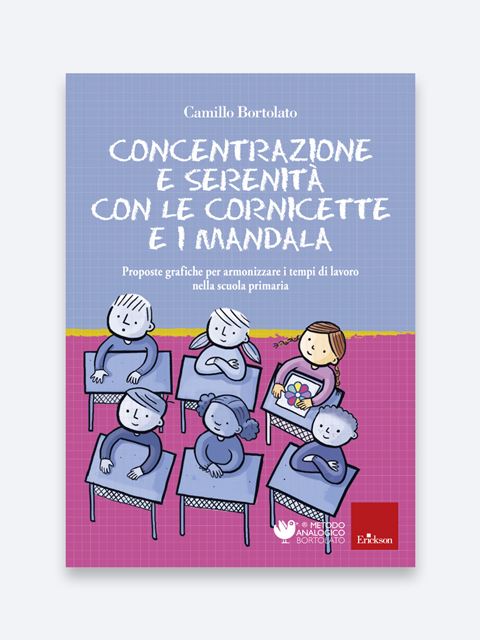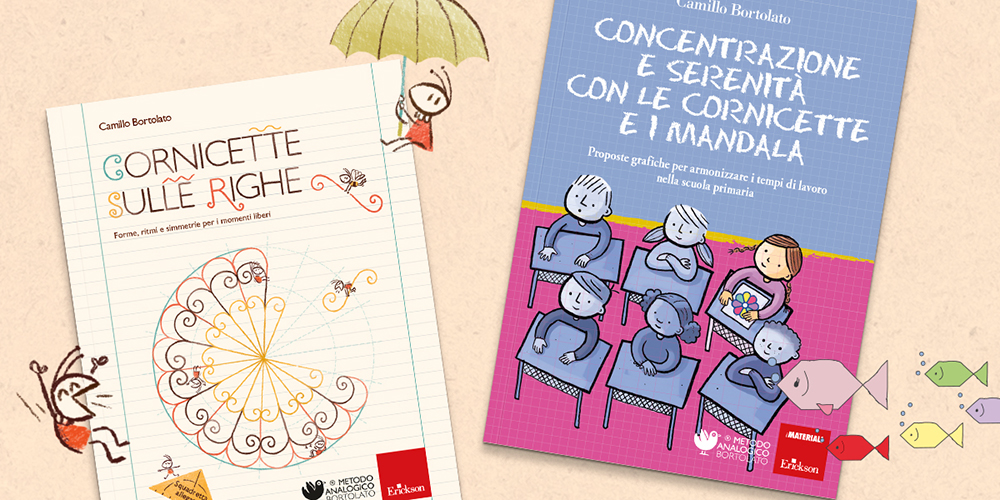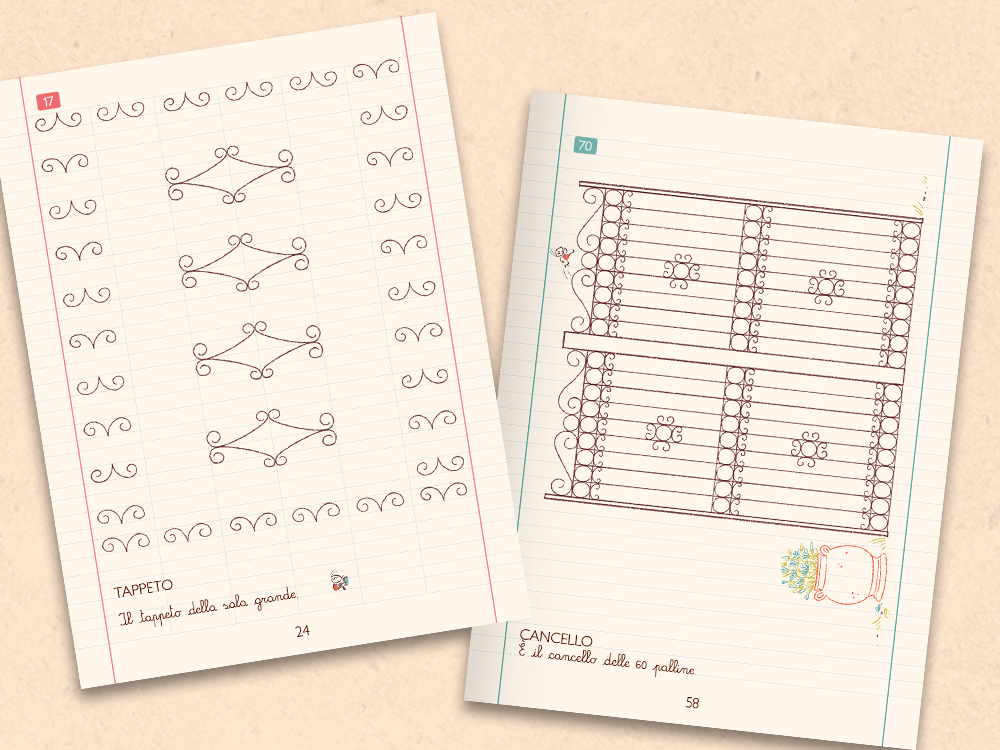 EN
EN
 PT
PT
Drawings for balancing out working speeds at primary school

Product: Book
Trim size in cm: 21x29,7
Pages: 200
ISBN: 9788861376540
Publication date: 01/09/2010
Suitable for: Primary 1st level (ages 6-7), Primary 2nd level (ages 8-10)
REQUEST A SAMPLE OR MORE INFORMATION
A new, riveting tool for helping children approach school in the calmest, the most fun and above all the most effective way.
At school some pupils always finish the exercises given to them too quickly, putting off others and causing teachers problems, as they don’t know how to keep them occupied. Concentration and calm with patterns and mandalas offers a solution to this «lack of harmony», presenting — for primary school children and, more generally, for children with difficulties — a journey in drawings designed to be easy to understand and long to carry out. This lets those who have finished their work to calmly fill in their free time and those who have yet to finish not to feel under pressure.
By dedicating themselves to this task, pupils, each in their own time, can reach a state of concentration, rest and satisfaction, enjoying the wonder of symmetries and colours.
Each page of the book is supplemented with thoughts about life in the classroom and as a child, in a sort of daily journal along an ideal journey of growth and maturity, aimed at balancing working speeds and improving calm amongst the school desks.
- Patterns to begin
- Pavings
- Mandalas with a goniometer
- Mandalas with a compass
- Wheels


Camillo Bortolato designed two innovative titles for the Analogical Method series: Patterns on the lines and Concentration and calm with patterns and mandalas help primary school children to keep serenity and self-esteem in the class, training graphic skills and self-awareness at the same time.
PATTERNS ON THE LINES
Shapes, patterns and symmetries in your free time
Many original patterns are offered to primary school children, to help them improve concentration, explore geometric concepts, practice pre-graphism skills and relax in moments of free time. Children will learn to carefully observe everyday life objects, such as gates, carpets and railings, and appreciate the beauty in their lines. A useful tool to enhance breaks during the lesson, develop orientation skills on paper, recognize sequences and symmetries and discover hands-on the geometry of shapes. Find out more!
Contents
First and second grade lines | Third and fourth grade lines | Fifth grade lines

CONCENTRATION AND CALM WITH PATTERNS AND MANDALAS
Drawings for balancing out working speeds at primary school
How can teacher keep children who always finish first occupied, avoiding slower pupils to feel uncomfortable? How can they teach pupils that, in some moments, you have to keep quiet and respect the silence? How can they fill the remaining minutes when the lesson finishes earlier than expected? Concentration and calm with patterns and mandalas offers a journey in drawings designed to be easy to understand and long to carry out. Pupils, following their own rhythm, can reach a state of concentration, rest and satisfaction, enjoying the wonder of symmetries and colours. Each page of the book is supplemented with thoughts about life in the classroom and as a child, in a sort of daily journal along an ideal journey of personal growth and maturity. Find out more!
Contents
Patterns to begin | Pavings | Mandalas with a goniometer | Mandalas with a compass | Wheels
Leaf through some pages of the volume which have been translated into English to facilitate your evaluation of the product:
THE AUTHOR
Camillo Bortolato is a pedagogist and teacher with over 40 years experience in primary schools. In addition to teaching, he has for many years been intensely involved in research on methodologies and teaching tools for mathematics. He is particularly interested in designing tools which make teaching easier and school less heavy going for teachers, pupils and parents. The Bortolato Analogical Method appeals to children’s intuition to transform learning into a joyful flight of discovery by focusing on the innate way they learn. From 2005 to today more than 1.000.000 children in Italy have used the Analogical Method and its materials.